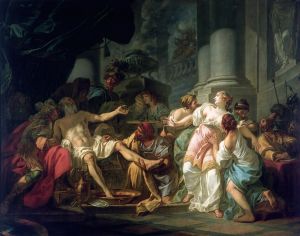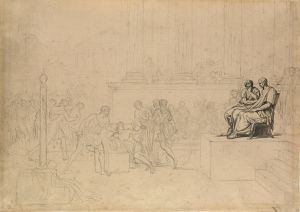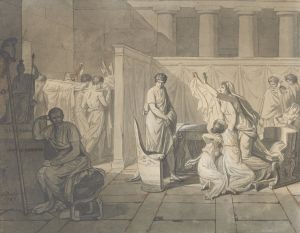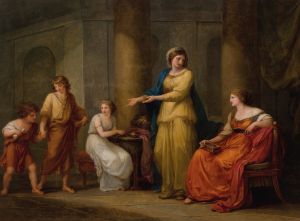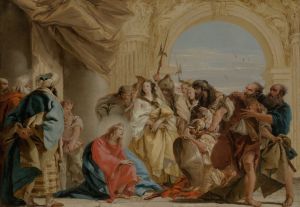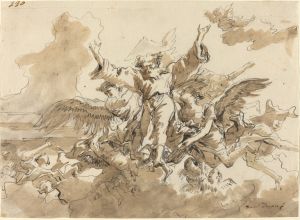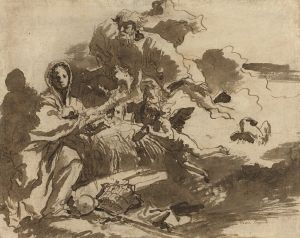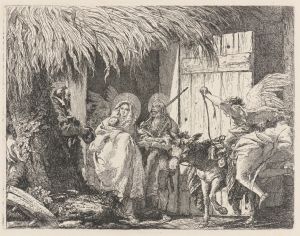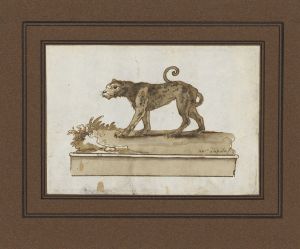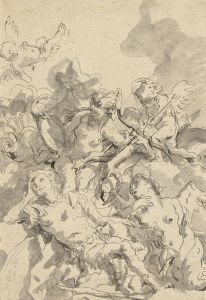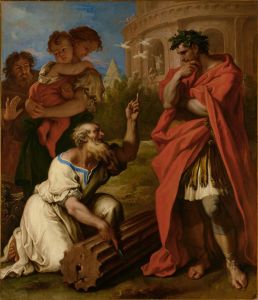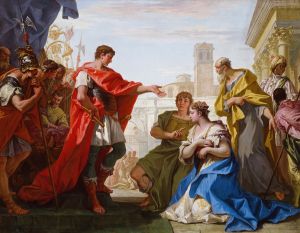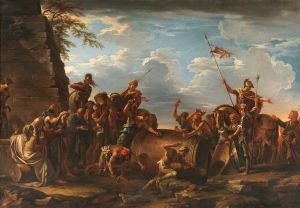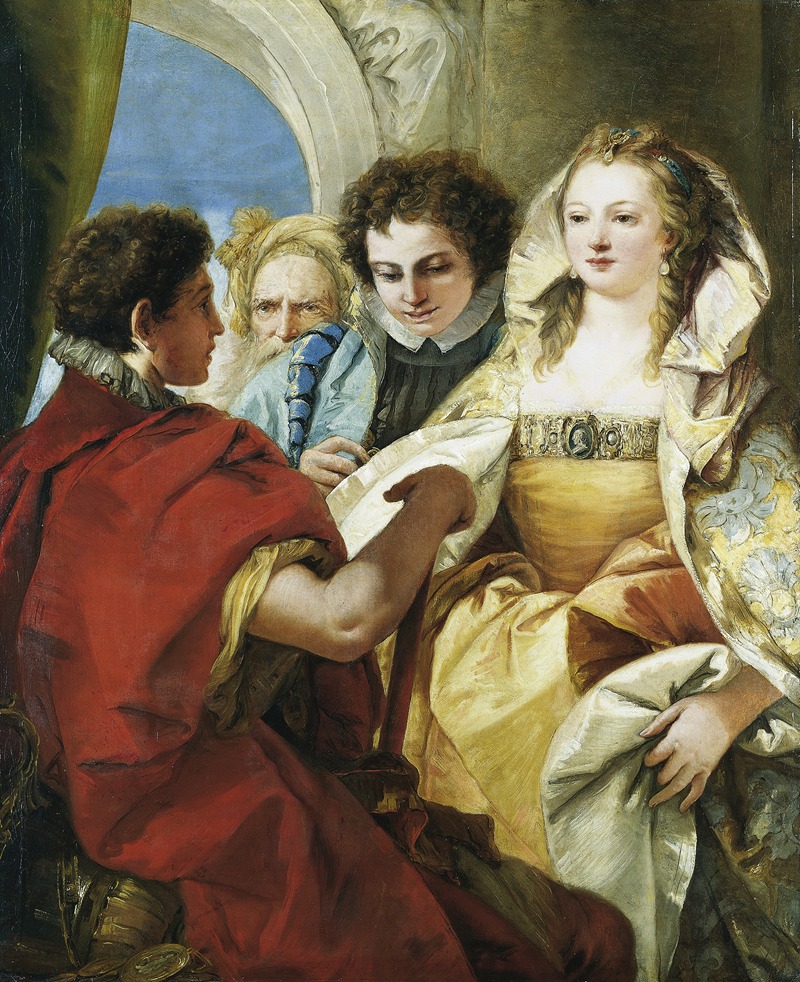
The Continence Of Scipio
A hand-painted replica of Giovanni Domenico Tiepolo’s masterpiece The Continence Of Scipio, meticulously crafted by professional artists to capture the true essence of the original. Each piece is created with museum-quality canvas and rare mineral pigments, carefully painted by experienced artists with delicate brushstrokes and rich, layered colors to perfectly recreate the texture of the original artwork. Unlike machine-printed reproductions, this hand-painted version brings the painting to life, infused with the artist’s emotions and skill in every stroke. Whether for personal collection or home decoration, it instantly elevates the artistic atmosphere of any space.
Giovanni Domenico Tiepolo, an Italian painter and printmaker, is known for his contributions to the Rococo movement in the 18th century. One of his notable works is "The Continence of Scipio," which depicts a scene from Roman history. This painting illustrates the story of the Roman general Scipio Africanus, renowned for his magnanimity and virtue.
The historical context of the painting is rooted in the Second Punic War, a significant conflict between Rome and Carthage. Scipio Africanus, who played a crucial role in Rome's victory, is celebrated for his moral integrity and leadership. The story depicted in Tiepolo's painting is derived from the accounts of ancient historians such as Livy and Polybius. According to these sources, after the capture of New Carthage (modern-day Cartagena, Spain) in 209 BC, Scipio was presented with a beautiful captive woman. She was the fiancée of a Celtiberian prince named Allucius. Instead of taking advantage of his power, Scipio chose to return the woman to her fiancé, along with the ransom offered by her family, as a gesture of goodwill and honor.
Tiepolo's painting captures this moment of virtue and restraint. The composition typically features Scipio seated, exuding authority and calmness, as he gestures towards the woman, who is often depicted with a sense of relief and gratitude. The surrounding figures, including soldiers and attendants, add to the narrative by displaying a range of emotions from admiration to surprise. The setting is usually grand, reflecting the importance of the event and the stature of Scipio himself.
Giovanni Domenico Tiepolo was the son of the famous Venetian painter Giovanni Battista Tiepolo, and he often collaborated with his father. Domenico's style is characterized by its vibrant color palette, dynamic compositions, and a keen attention to detail, all of which are evident in "The Continence of Scipio." His works often reflect a blend of classical themes with the playful elegance typical of the Rococo period.
"The Continence of Scipio" is not just a testament to Tiepolo's artistic skill but also serves as a moral lesson on the virtues of leadership and self-control. The painting aligns with the Enlightenment ideals of the time, which emphasized reason, virtue, and the moral responsibilities of those in power. Through his depiction, Tiepolo not only tells a historical story but also engages the viewer in a reflection on the nature of power and the importance of ethical conduct.
While the exact date of the painting's creation is not always specified, it is generally placed within the productive period of Tiepolo's career in the mid to late 18th century. The work is part of a larger tradition of European art that sought to depict historical and mythological subjects with a focus on moral and ethical themes.
"The Continence of Scipio" by Giovanni Domenico Tiepolo remains an important work for its artistic merit and its portrayal of a timeless narrative of virtue. It continues to be studied and appreciated for its historical significance and its contribution to the rich tapestry of 18th-century European art.





